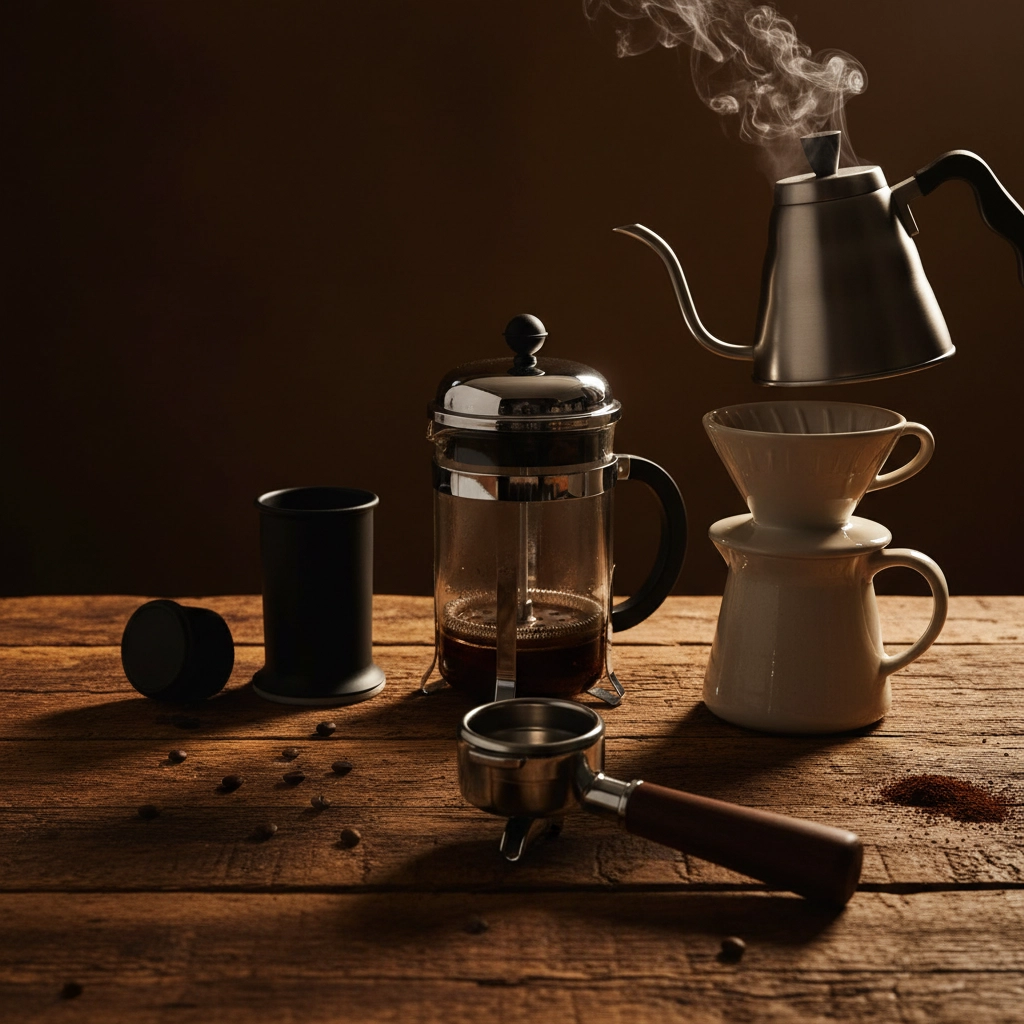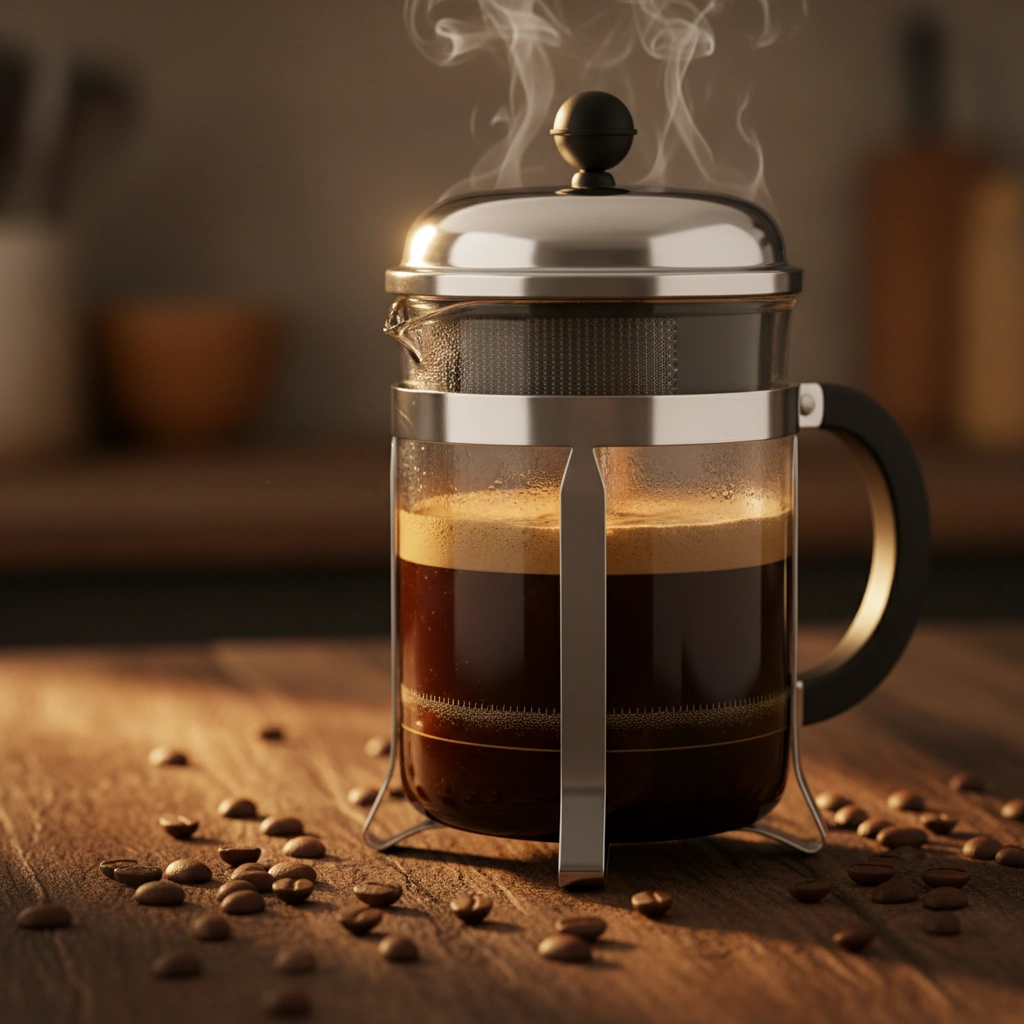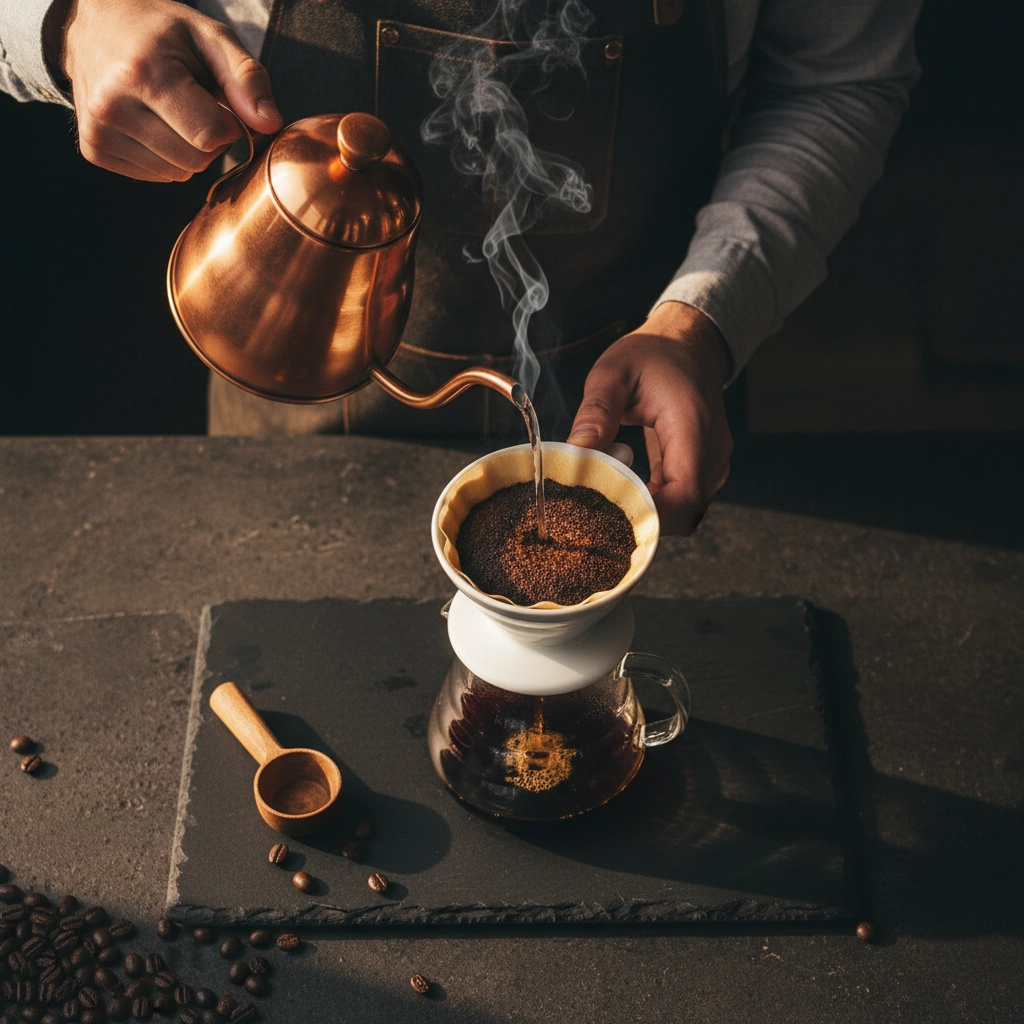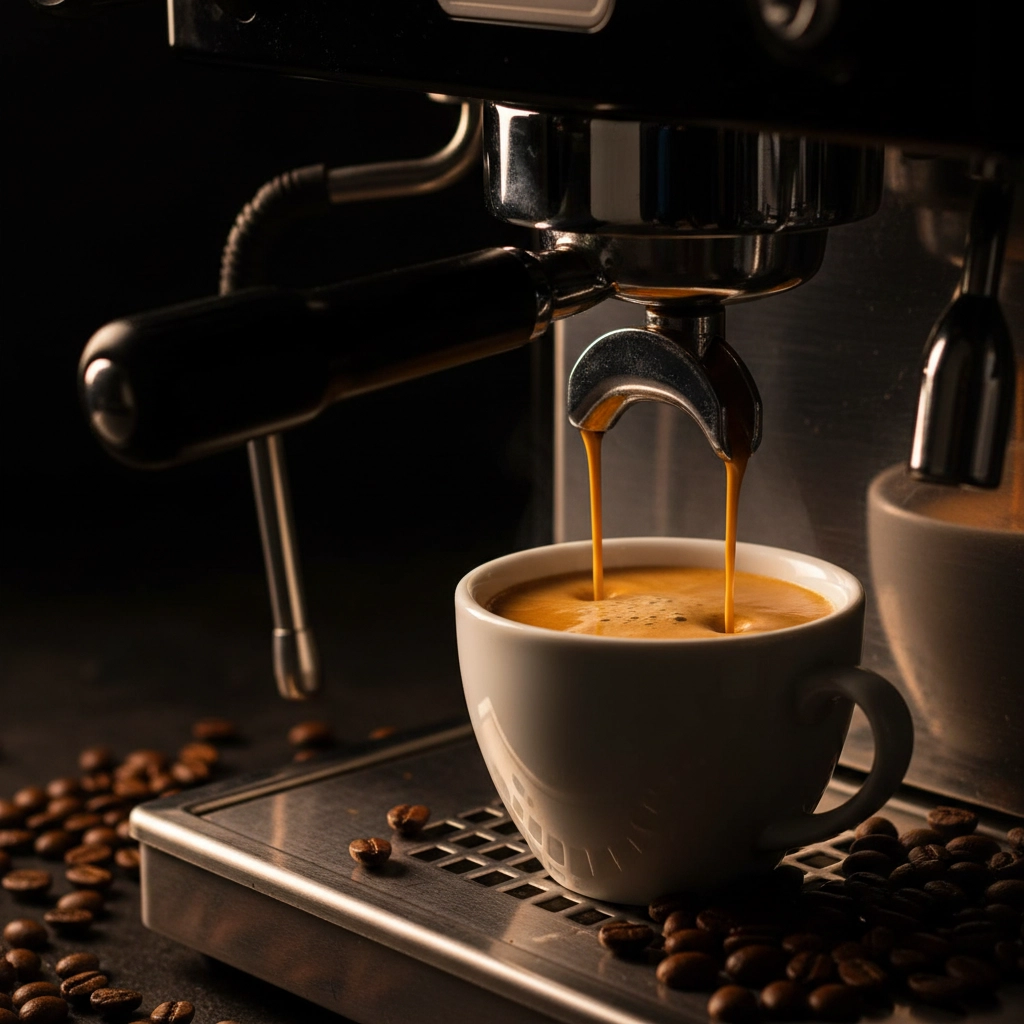There's something magical about that first sip of perfectly brewed coffee in the morning. But here's the thing – the way you brew your coffee can completely transform your entire coffee experience. Whether you're a casual coffee drinker or a serious enthusiast, understanding different brewing methods can unlock flavors you never knew existed in your favorite beans.
At Gently Ground Coffee, we believe that great coffee starts with great beans, but the brewing method is what brings those beans to life. Today, we're diving deep into the fascinating world of coffee brewing techniques, exploring everything from quick and convenient methods to elaborate, almost ceremonial processes that highlight every subtle note in your cup.
The Two Worlds of Coffee Brewing
Before we jump into specific methods, let's talk about the two main categories that most brewing techniques fall into: drip and immersion methods. Think of it like the difference between a gentle rain and a relaxing bath.
Drip methods involve water passing through coffee grounds, like water flowing through a filter. Immersion methods, on the other hand, let your coffee grounds steep directly in water for a controlled period, creating a more intimate relationship between water and coffee.
Understanding this fundamental difference will help you choose the right method for your taste preferences and lifestyle.

Immersion Methods: Deep and Full-Bodied
French Press: The Classic Choice
The French press is probably the most recognizable immersion brewing method, and for good reason. It's simple, forgiving, and produces rich, full-bodied coffee that showcases the deeper, more robust flavors in your beans.
Here's how it works: coarsely ground coffee (think sea salt texture) sits in hot water for about four minutes. Then, you slowly press the plunger down, separating the grounds from your freshly brewed coffee. Because the grounds stay in contact with water throughout the entire brewing process, you get maximum extraction and often stronger, bolder flavors.
The French press is perfect for those who love their coffee with body and don't mind a bit of sediment in their cup. It's also great for brewing multiple servings at once – perfect for lazy weekend mornings or when you have guests over.
AeroPress: The Innovation Game-Changer
If the French press is the classic car of coffee brewing, the AeroPress is the modern sports car. This relatively new brewing method combines the best of immersion and pressure brewing in a compact, travel-friendly device.
The AeroPress works by steeping coffee grounds in hot water for just 20-40 seconds, then using air pressure to force the brew through a filter. This shorter brewing time significantly reduces acidity and bitterness, creating a smooth, clean cup that highlights the brighter notes in your coffee.
What makes the AeroPress special is its versatility. You can experiment with different grind sizes, water temperatures, and brewing times to create completely different flavor profiles from the same beans. It's like having a mini coffee laboratory right on your counter.
Cold Brew: Smooth Operator
Cold brew isn't just iced coffee – it's a completely different brewing method that deserves its own spotlight. By steeping coarsely ground coffee in room temperature or cold water for 12-24 hours, you create a smooth, naturally sweet concentrate that's perfect for hot summer days.
The long, slow extraction process pulls out the coffee's natural sweetness while leaving behind much of the acidity and bitterness. The result is a mellow, refreshing drink that can be enjoyed black or mixed with milk, cream, or your favorite flavoring.

Drip and Pour-Over Methods: Precision and Control
Pour-Over: The Art of Slow Coffee
Pour-over brewing is where coffee meets meditation. This manual brewing method gives you complete control over every variable – water temperature, pour speed, grind size, and timing. It's perfect for those who want to be actively involved in their coffee-making process.
Popular pour-over devices include the V60, Chemex, and Kalita Wave. Each has its own characteristics, but they all work on the same principle: hot water is slowly poured over coffee grounds in a circular motion, allowing for even extraction and highlighting the unique flavors of your beans.
The Chemex, with its elegant hourglass shape and thick filters, produces clean, bright coffee with remarkable clarity. The V60's conical shape and spiral ridges promote even extraction, while the Kalita Wave's flat bottom ensures consistent brewing every time.
Pour-over brewing typically takes 3-4 minutes and produces 1-2 cups, making it perfect for those quiet morning moments when you want to start your day mindfully.
Automatic Drip: Convenience Meets Quality
Not everyone has time for manual brewing methods, and that's perfectly okay. Modern drip coffee makers have come a long way from the basic machines of the past. Today's high-quality automatic drip brewers can produce excellent coffee with minimal effort.
The key to great automatic drip coffee is using the right grind size (medium, like kosher salt) and maintaining proper ratios – typically 1:15 to 1:17 coffee to water. Look for machines with proper temperature control and even water distribution for the best results.

Pressure-Based Methods: Intensity and Richness
Espresso: The Foundation
Espresso isn't just a drink – it's the foundation for countless coffee beverages and a brewing method that requires precision and practice. By forcing hot water through finely ground coffee under high pressure, espresso machines create concentrated, rich shots that serve as the base for lattes, cappuccinos, and americanos.
Making great espresso involves grinding your beans to a fine consistency (like powdered sugar), distributing the grounds evenly in a portafilter, tamping firmly with about 30 pounds of pressure, and extracting the shot in 25-30 seconds. When done correctly, you'll get a rich, golden-brown shot with a layer of crema on top.
Moka Pot: Stovetop Espresso
The Moka pot, often called stovetop espresso, creates strong, rich coffee using steam pressure. Water in the bottom chamber heats up, creating steam that pushes water up through coffee grounds and into the upper chamber.
While it doesn't produce true espresso, the Moka pot creates concentrated, full-bodied coffee that's perfect for those who want intensity without investing in an expensive espresso machine. The key is using the right grind size (fine but not as fine as espresso) and removing the pot from heat as soon as you hear gurgling sounds.

Specialty Methods: Exploring Coffee Culture
Siphon Brewing: The Theater of Coffee
Siphon brewing, also known as vacuum coffee brewing, is as much about the show as it is about the coffee. This method uses vapor pressure and vacuum to brew coffee, creating a theatrical experience that never fails to impress guests.
Water in the bottom chamber heats up and rises into the upper chamber where it meets the coffee grounds. After brewing, the heat is removed, creating a vacuum that pulls the brewed coffee back down through a filter. The result is clean, bright coffee with excellent clarity.
Turkish Coffee: Ancient Tradition
One of the oldest brewing methods still in use, Turkish coffee involves grinding beans to an extremely fine powder and brewing them directly in water with sugar (optional) in a special pot called a cezve. The coffee is never filtered, so the grounds settle at the bottom of the cup.
This method creates an intensely flavored, thick coffee that's meant to be sipped slowly and savored. It's a social brewing method, often prepared for guests as a sign of hospitality.
Choosing Your Perfect Method
With so many options available, how do you choose the right brewing method for you? Consider these factors:
Time: If you're always rushing in the morning, automatic drip or AeroPress might be your best bet. If you enjoy the ritual of coffee making, pour-over or French press could be perfect.
Flavor Preference: Love full-bodied, rich coffee? Try French press or Moka pot. Prefer bright, clean flavors? Pour-over methods shine here. Want smooth, mellow coffee? Cold brew is your friend.
Serving Size: Brewing for one? Pour-over or AeroPress work well. Need to serve a crowd? French press or automatic drip machines are more practical.
Equipment Budget: French press and AeroPress are relatively inexpensive. Espresso machines and high-end pour-over setups require more investment.
The Joy of Experimentation
The beautiful thing about coffee brewing is that there's no single "right" way to do it. Each method brings out different characteristics in your beans, and your perfect cup might be completely different from someone else's.
Don't be afraid to experiment with different methods, grind sizes, water temperatures, and timing. Keep notes on what works and what doesn't. Some days you might crave the boldness of French press coffee, while other days call for the bright clarity of a pour-over.
Remember, the best brewing method is the one that consistently gives you a cup of coffee you love. Whether that's a simple automatic drip machine or an elaborate siphon setup, what matters most is that you're enjoying your daily coffee ritual.
At Gently Ground Coffee, we're here to support your brewing journey with high-quality beans that taste great no matter how you choose to prepare them. After all, great coffee starts with great beans, but the magic happens when you find the brewing method that brings out the best in both your coffee and your morning routine.




